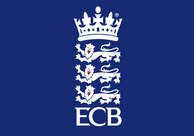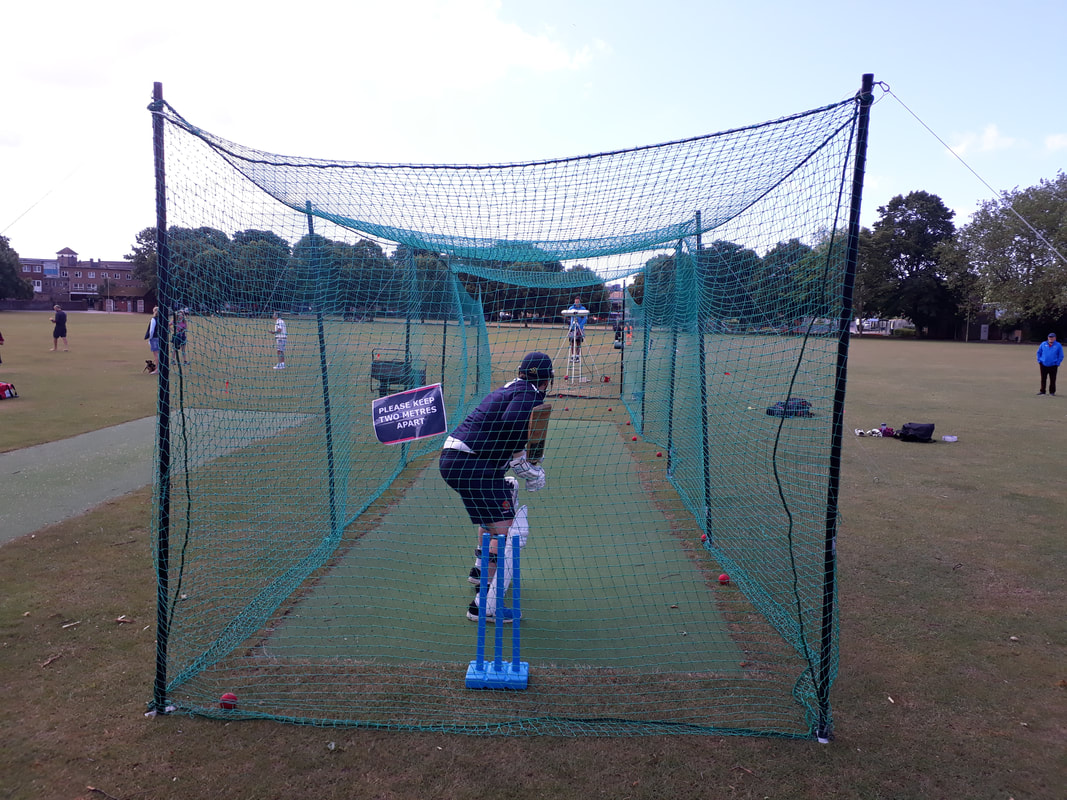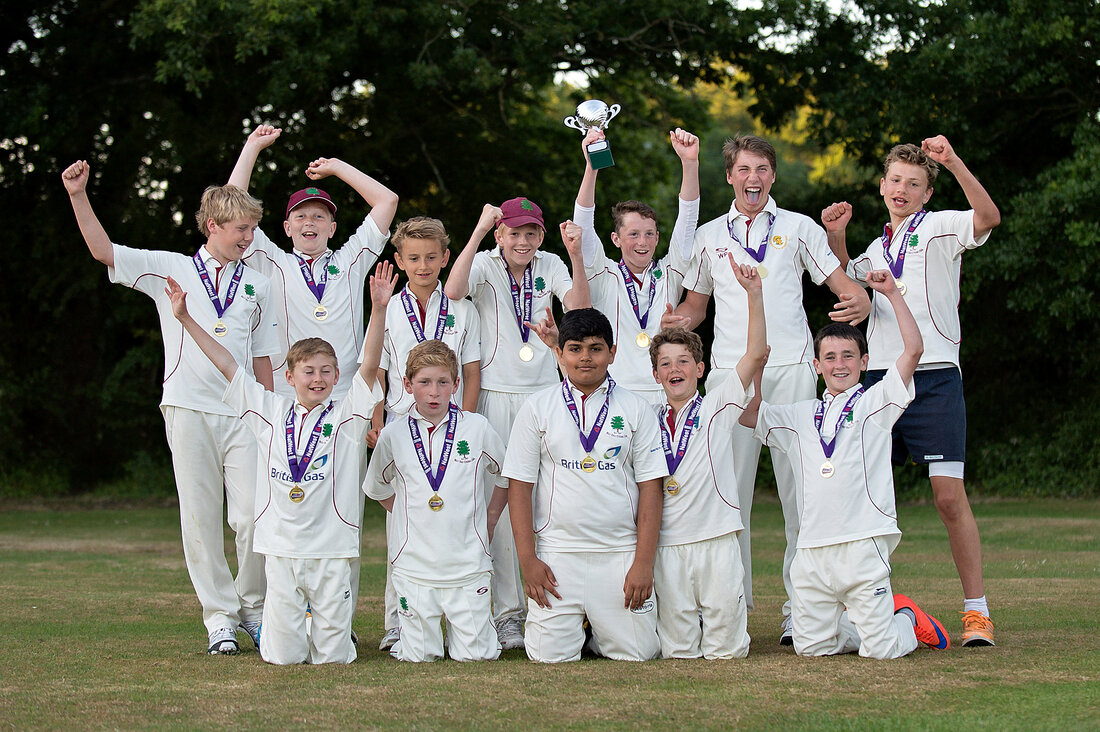
They may be a natural vector for release but it's unfair to bash the ECB over recreational cricket's delayed return.
We want to blame someone for our enforced idleness, and - spurred on by willing cheerleaders - the ECB make for a wonderful scapegoat: they are big, they are impossible to miss, they are the authority in the room.
The following article is a thought provoking essay by Sam Morshead, which appears in the digital columns of The Cricketer magazine, www.thecricketer.com
We want to blame someone for our enforced idleness, and - spurred on by willing cheerleaders - the ECB make for a wonderful scapegoat: they are big, they are impossible to miss, they are the authority in the room.
The following article is a thought provoking essay by Sam Morshead, which appears in the digital columns of The Cricketer magazine, www.thecricketer.com
Have you ever played a round of ECB-bashing ?
It’s incredibly addictive, and sometimes the governing body makes it really quite easy: helicopters on the Nursery Ground, Floridian hip hop concerts, the relentless pursuit of pay TV, The Hundred et cetera, et cetera.
Like any habit, it can be very tricky to break.
And with that in mind, perhaps it’s not surprising that a large section of the cricket community has over the past fortnight offloaded its frustrations about the recreational game’s continued suspension on the governing body.
We have been cooped up, stripped of many of the joys of summer, wrestling with the mixed emotions of watching friends mourn for lost relatives with one eye while nervously checking the business’s balance sheets with the other.
We want to be able to blame someone for our enforced idleness, and - spurred on by a handful of willing cheerleaders - the ECB make for a wonderful scapegoat: they are big, they are impossible to miss, they are the authority in the room.
As discontented citizens who cannot fathom why standing next to the friesians at deep midwicket is more dangerous than getting sozzled with friends in a pub garden, their perceived passivity presents itself as a giant, inflatable dartboard just waiting to be popped.
A “natural vector for release”, if you will.
Impasse
On this occasion, though, and fully appreciating the allegations of lickspittle and stooge that might follow, it feels important to stand in the way of the rotten fruit.
There is not one member of the cricket community revelling in the current impasse, and that includes the men and women who make the big decisions.
Why would there be?
Cricket’s continued absence at every level makes the sport we love poorer. It separates communities, it affects our mental and physical health, it hacks away at job security, and it deprives us of all-too-rare moments of genuine elation.
The ECB are as aware of this as the rest of us, fighting as they are against a financial hole of anywhere between £100million and £380million.
Absolutely, the governing body’s depleted reserves will have contributed to the fragility of the situation, as will their reliance on a single broadcaster and the massive contractual obligations for 2020 they’ve been desperately trying to claw back.
But is it really reasonable to criticise an organisation for looking to minimise damage during an unprecedented catastrophe which has killed half a million people and wiped trillions off the global economy?
The vast majority of business owners across the country have been looking at spreadsheets and wondering how to achieve a best-case scenario, where “best-case” has become a byword for survival. And the ECB is no different.
It’s incredibly addictive, and sometimes the governing body makes it really quite easy: helicopters on the Nursery Ground, Floridian hip hop concerts, the relentless pursuit of pay TV, The Hundred et cetera, et cetera.
Like any habit, it can be very tricky to break.
And with that in mind, perhaps it’s not surprising that a large section of the cricket community has over the past fortnight offloaded its frustrations about the recreational game’s continued suspension on the governing body.
We have been cooped up, stripped of many of the joys of summer, wrestling with the mixed emotions of watching friends mourn for lost relatives with one eye while nervously checking the business’s balance sheets with the other.
We want to be able to blame someone for our enforced idleness, and - spurred on by a handful of willing cheerleaders - the ECB make for a wonderful scapegoat: they are big, they are impossible to miss, they are the authority in the room.
As discontented citizens who cannot fathom why standing next to the friesians at deep midwicket is more dangerous than getting sozzled with friends in a pub garden, their perceived passivity presents itself as a giant, inflatable dartboard just waiting to be popped.
A “natural vector for release”, if you will.
Impasse
On this occasion, though, and fully appreciating the allegations of lickspittle and stooge that might follow, it feels important to stand in the way of the rotten fruit.
There is not one member of the cricket community revelling in the current impasse, and that includes the men and women who make the big decisions.
Why would there be?
Cricket’s continued absence at every level makes the sport we love poorer. It separates communities, it affects our mental and physical health, it hacks away at job security, and it deprives us of all-too-rare moments of genuine elation.
The ECB are as aware of this as the rest of us, fighting as they are against a financial hole of anywhere between £100million and £380million.
Absolutely, the governing body’s depleted reserves will have contributed to the fragility of the situation, as will their reliance on a single broadcaster and the massive contractual obligations for 2020 they’ve been desperately trying to claw back.
But is it really reasonable to criticise an organisation for looking to minimise damage during an unprecedented catastrophe which has killed half a million people and wiped trillions off the global economy?
The vast majority of business owners across the country have been looking at spreadsheets and wondering how to achieve a best-case scenario, where “best-case” has become a byword for survival. And the ECB is no different.
We are starting to see the medium-term effects of the coronavirus on other sports.
The Football Association, a deeper and arguably more robust organisation which presides over a sport of immense wealth, on Monday announced Covid-19 losses of £300million. In the same memo, it was confirmed that 124 jobs would go as a result, including 82 which are currently filled.
UK Active and Community Leisure UK, two of the bodies which oversee the leisure centre, gym and swimming pool sector - a much wider participation base than cricket’s, have suggested as many as 58,000 jobs are at risk, with a £800million funding shortfall as a result of lockdown given as the reason.
What would the real-terms impact of a £300million deficit be on cricket? The dagger wouldn’t just stab away at the professional game, it would protrude through the counties, through the development structure, through the projects aimed at inclusivity and gender equality. It would hurt.
So it makes sense that, initially, the ECB prioritised the international men’s game - not out of disrespect to amateur, female or youth cricketers but because financially there was no alternative.
Poorly informed
If you’ve been told that there has been total inaction from your governing body when it comes to the recreational game during three months of lockdown, you’ve been poorly informed.
Lobbying has been taking place for more than 10 weeks, including meetings between the sports minister Nigel Huddleston and Harrison. The all-sports advisory group on the return of team sport is led by the ECB and its chief medical officer Nick Peirce. Constructive discussions have taken place with the Department for Culture, Media and Sport to such a point that, a week ago, everything was in place to announce the game’s comeback on July 4. Then the prime minister got up in the House of Commons.
The ECB has been involved in conversations with government for more than 10 weeks
You might wonder why other sports have returned - golf, tennis and basketball in particular - but cricket has not. Some commentators might have told you that cricket’s administrators haven’t done enough to convince the government that our game is no less risky than foursomes, mixed doubles or one-on-one.
It would be a pertinent point, was it not for the fact the ECB involved at least three members of the government’s own scientific advisory group in planning the recreational game’s return, and several of the experts who sit on SAGE are as unconvinced as many of us by Boris Johnson’s now infamous description of a five-and-three-quarter ounce lump of leather.
In recent days, the more proactive members of the cricket community have drawn up their own, detailed proposals for ensuring cricket’s safe return.
It has been well documented that South Wilts have created a 31-point plan which covers every element of a matchday, from travel to teas, which has been sent to the ECB, so far without response.
The Leading Edge, a collective of former professional cricketers, on Monday presented a five-a-side format including no-go areas around umpires and zones for fielders.
Positive reception
And in club and league committee meetings around the country, discussions have been taking place for weeks about how best to implement Covid-secure measures.
It’s all worthwhile work, but many of these ideas - or the sentiment around those ideas - have already been explored by the ECB’s working party and presented to DCMS, largely - according to multiple sources - to a positive reception.
Ultimately, and it is a critical point which seems to be missed routinely by many, the ECB cannot in good faith issue guidance which contradicts the government, even if from July 4 the PM has declared ‘common sense’ will take over from legislation.
It is the government, not the ECB, which sets the rules on the maximum gatherings of people from separate households - this currently stands at six and for matchplay cricket to take place it either needs to be increased or No.10 needs to give the sport special dispensation. Team sports are still technically banned, including short-sided basketball, for example, but doubles tennis has been given a free pass.
Government guidance relating to the return of professional sport has no bearing on recreational sport, too - a fact which appears to be deliberately overlooked by profile picture-less Twitter users bemoaning “footballers cuddling each other”.
Could the ECB have been more publicly vocal during the lobbying process? Definitely. In a world where immediacy is often more attractive than thoroughness, the communications department would have won over plenty more dissenters by making brash remarks about Downing Street’s handling of their particular case.
The Football Association, a deeper and arguably more robust organisation which presides over a sport of immense wealth, on Monday announced Covid-19 losses of £300million. In the same memo, it was confirmed that 124 jobs would go as a result, including 82 which are currently filled.
UK Active and Community Leisure UK, two of the bodies which oversee the leisure centre, gym and swimming pool sector - a much wider participation base than cricket’s, have suggested as many as 58,000 jobs are at risk, with a £800million funding shortfall as a result of lockdown given as the reason.
What would the real-terms impact of a £300million deficit be on cricket? The dagger wouldn’t just stab away at the professional game, it would protrude through the counties, through the development structure, through the projects aimed at inclusivity and gender equality. It would hurt.
So it makes sense that, initially, the ECB prioritised the international men’s game - not out of disrespect to amateur, female or youth cricketers but because financially there was no alternative.
Poorly informed
If you’ve been told that there has been total inaction from your governing body when it comes to the recreational game during three months of lockdown, you’ve been poorly informed.
Lobbying has been taking place for more than 10 weeks, including meetings between the sports minister Nigel Huddleston and Harrison. The all-sports advisory group on the return of team sport is led by the ECB and its chief medical officer Nick Peirce. Constructive discussions have taken place with the Department for Culture, Media and Sport to such a point that, a week ago, everything was in place to announce the game’s comeback on July 4. Then the prime minister got up in the House of Commons.
The ECB has been involved in conversations with government for more than 10 weeks
You might wonder why other sports have returned - golf, tennis and basketball in particular - but cricket has not. Some commentators might have told you that cricket’s administrators haven’t done enough to convince the government that our game is no less risky than foursomes, mixed doubles or one-on-one.
It would be a pertinent point, was it not for the fact the ECB involved at least three members of the government’s own scientific advisory group in planning the recreational game’s return, and several of the experts who sit on SAGE are as unconvinced as many of us by Boris Johnson’s now infamous description of a five-and-three-quarter ounce lump of leather.
In recent days, the more proactive members of the cricket community have drawn up their own, detailed proposals for ensuring cricket’s safe return.
It has been well documented that South Wilts have created a 31-point plan which covers every element of a matchday, from travel to teas, which has been sent to the ECB, so far without response.
The Leading Edge, a collective of former professional cricketers, on Monday presented a five-a-side format including no-go areas around umpires and zones for fielders.
Positive reception
And in club and league committee meetings around the country, discussions have been taking place for weeks about how best to implement Covid-secure measures.
It’s all worthwhile work, but many of these ideas - or the sentiment around those ideas - have already been explored by the ECB’s working party and presented to DCMS, largely - according to multiple sources - to a positive reception.
Ultimately, and it is a critical point which seems to be missed routinely by many, the ECB cannot in good faith issue guidance which contradicts the government, even if from July 4 the PM has declared ‘common sense’ will take over from legislation.
It is the government, not the ECB, which sets the rules on the maximum gatherings of people from separate households - this currently stands at six and for matchplay cricket to take place it either needs to be increased or No.10 needs to give the sport special dispensation. Team sports are still technically banned, including short-sided basketball, for example, but doubles tennis has been given a free pass.
Government guidance relating to the return of professional sport has no bearing on recreational sport, too - a fact which appears to be deliberately overlooked by profile picture-less Twitter users bemoaning “footballers cuddling each other”.
Could the ECB have been more publicly vocal during the lobbying process? Definitely. In a world where immediacy is often more attractive than thoroughness, the communications department would have won over plenty more dissenters by making brash remarks about Downing Street’s handling of their particular case.
Given the incumbent’s tolerance for criticism, however, it wouldn’t have been unreasonable for the governing body to have decided against taking on No.10 at its one core strength: manipulation of the public message.
Could the ECB have done more to help clubs through the first half of the summer? Possibly. Although £20million in loans and grants were made available in April via the Emergency Loan Scheme and Return To Cricket Grant Scheme, anecdotal evidence suggests some clubs which needed the money the most have been unable to access it - either because of the weight of paperwork required or the low threshold for qualification for grants (annual turnover of less than £15,000) and a reluctance to take on loan repayments in 2021. So far, around £700,000 has been allocated, and the programmes have received 238 applications.
Government support
Yet, the ECB has clearly signposted other avenues for clubs to receive support, most notably Sport England which has so far allocated more than £20million to the amateur game during the crisis, and around 2,600 clubs have now claimed financial support from government, local authorities or the governing body.
Could the ECB have communicated better with the clubs? Perhaps. But a scroll through some of the detailed messages which have dripped down from leagues and county boards to their members - concise, considered and full of important information - suggest that the chain has been pretty resolute.
Have updates really been too few and far between? Or have you expected far more than is practical?
Recreational cricket is still very much on course to return in July, though not as early as had previously been hoped. In all likelihood, its comeback will be presented as a development of government policy, rather than an about-face in the fallout from Johnson’s appearance in the Commons a week ago.
The ECB, one would imagine, will happily take that on the chin if it means tens of thousands of men, women and children being able to crack leather on willow - in one form or another - for a couple of months.
But it must not be repackaged as a gift from government. The ECB have worked for it, the circumstances demanded it. Nothing more.
Article reproduced by kind permission of The Cricketer magazine www.thecricketer.com
Could the ECB have done more to help clubs through the first half of the summer? Possibly. Although £20million in loans and grants were made available in April via the Emergency Loan Scheme and Return To Cricket Grant Scheme, anecdotal evidence suggests some clubs which needed the money the most have been unable to access it - either because of the weight of paperwork required or the low threshold for qualification for grants (annual turnover of less than £15,000) and a reluctance to take on loan repayments in 2021. So far, around £700,000 has been allocated, and the programmes have received 238 applications.
Government support
Yet, the ECB has clearly signposted other avenues for clubs to receive support, most notably Sport England which has so far allocated more than £20million to the amateur game during the crisis, and around 2,600 clubs have now claimed financial support from government, local authorities or the governing body.
Could the ECB have communicated better with the clubs? Perhaps. But a scroll through some of the detailed messages which have dripped down from leagues and county boards to their members - concise, considered and full of important information - suggest that the chain has been pretty resolute.
Have updates really been too few and far between? Or have you expected far more than is practical?
Recreational cricket is still very much on course to return in July, though not as early as had previously been hoped. In all likelihood, its comeback will be presented as a development of government policy, rather than an about-face in the fallout from Johnson’s appearance in the Commons a week ago.
The ECB, one would imagine, will happily take that on the chin if it means tens of thousands of men, women and children being able to crack leather on willow - in one form or another - for a couple of months.
But it must not be repackaged as a gift from government. The ECB have worked for it, the circumstances demanded it. Nothing more.
Article reproduced by kind permission of The Cricketer magazine www.thecricketer.com





